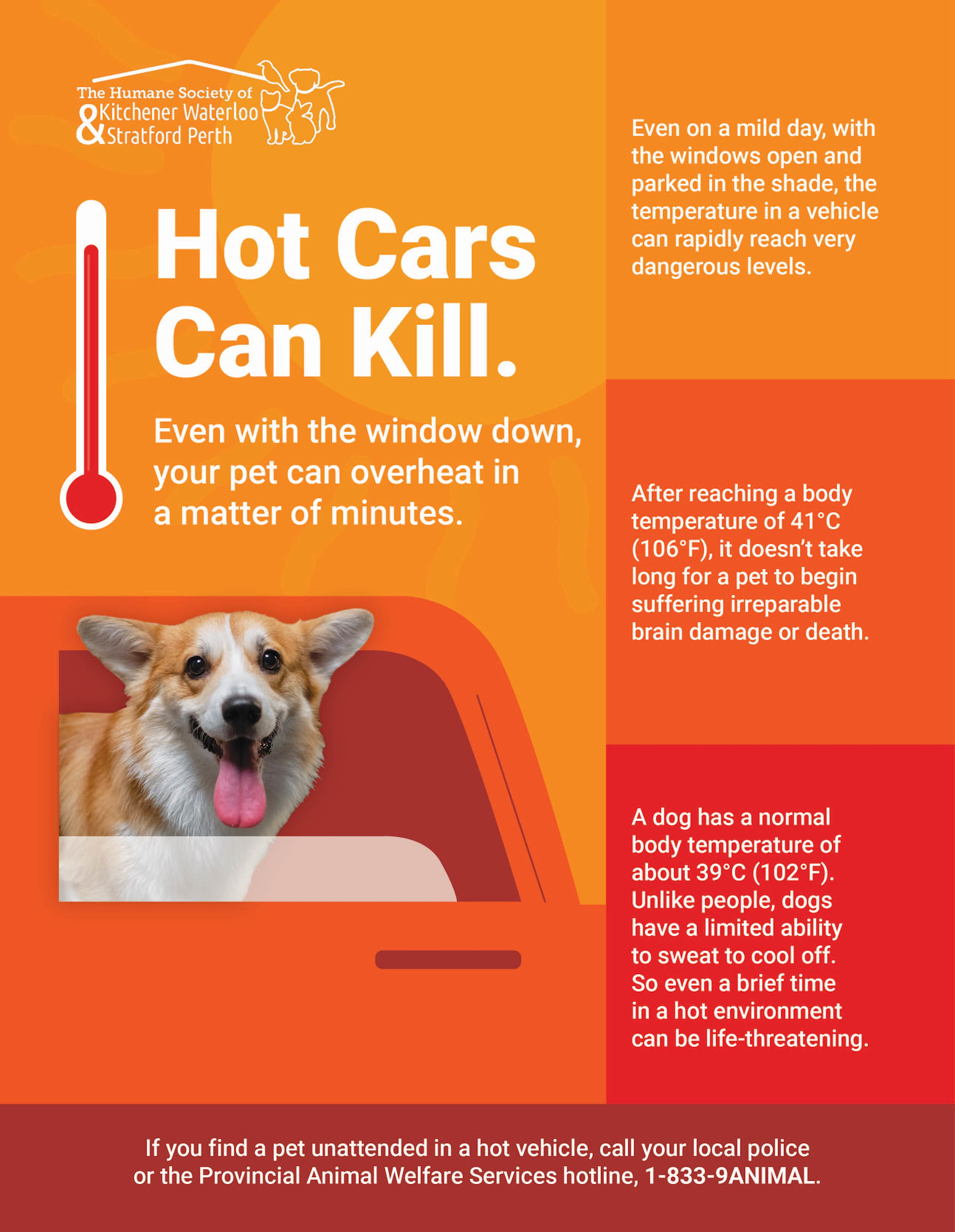
Why Leaving Pets in Cars on Hot Summer Days Can be Fatal
Owners and caretakers may believe they’re doing their furry friends a favor by bringing them along on errands. If pets can't be brought into stores, leaving them in the vehicle for a few minutes might seem harmless. However, pets can suffer harmful and even life-threatening effects in a short time inside a hot vehicle. Unlike humans, dogs can't release heat by sweating, causing their internal body temperature to rise quickly.
Certain dogs, including senior pets and those with flatter faces, are even more susceptible to heat-related challenges. Ultimately, it’s best to leave your dog at home, where they have more space, water, and shade to stay safe and comfortable.
What should pet owners think of when travelling with a pet and the dangers of leaving pets in cars?
• Firstly, if you can’t take your pet with you when you leave the car, then you should leave them at home where they are safe
• Even on a relatively mild day, and parked in the shade, temperatures in parked cars can become dangerous in a few minutes.
• Dogs have a limited ability to sweat so even a short time in a hot environment can be life threatening
• A dog’s normal body temperature is 39 degrees, and a body temperature of 41°C can be withstood only for a very short period of time before brain damage or death can occur.
• Minutes can mean the difference between life and death.
What should owners be aware of in terms of heat exhaustion and their pets?
• Please keep in mind that when you find it hot outside, so does your pet!
• Things like their size, breed and coat can play a factor in how the heat impacts them
• Pets suffering from heat exhaustion can still walk. But they may seem more lethargic.
• Take your pet into shade / a breeze or indoors in air conditioning.
• Offer drinking water.
• Give them time to rest.
What symptoms would one see and what can be done if a pet is suffering from heatstroke?
• Heatstroke is a medical emergency.
• You will see symptoms such as: excessive panting, dark red gums, collapse, pet may seem unresponsive.
• If your pet is suffering from heat stroke, you should:
• Immediately remove your pet from the hot environment and call your veterinarian, or prepare to leave for your emergency vet.
• Start the cooling process – cool cloths, cool water – avoid ice cold water to not shock their system.
• Keep your pet in air conditioning or in a breeze, including while in the car to the vet.
What can residents do if they see a pet in a hot car?
• If people are concerned about the welfare of an animal in a hot car, they should call their local police right away.
• They can also call Provincial Animal Welfare Services (PAWS) at 1-833-9ANIMAL.
• In our service areas, our animal services officers can attend but we cannot remove a pet from a vehicle, that’s why we need police or PAWS present.



